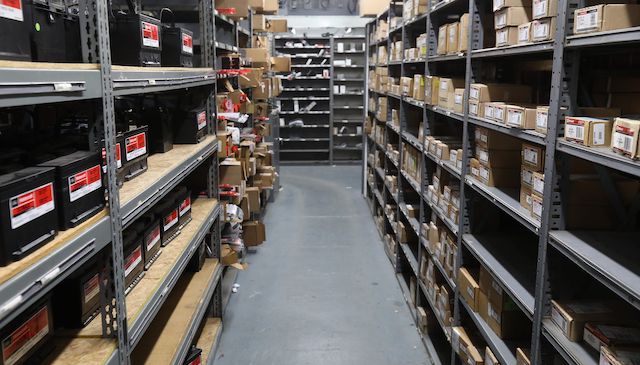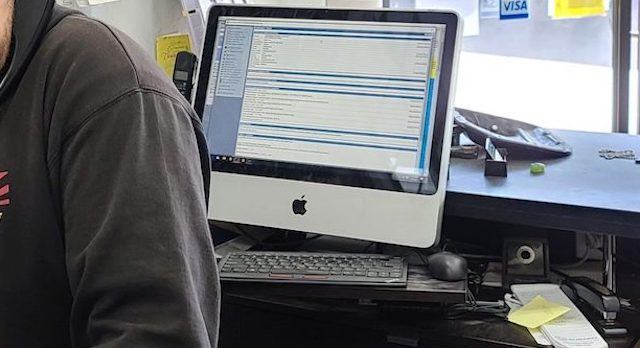Eight Ways To Get More ROs Completed Every Day
A busy shop is a successful shop. The more repair orders your shop completes in a day:
- The more money your shop makes
- The more money your flat rate techs make
- The less time your customers have to wait
In other words, everyone’s happy. You may be thinking, “My shop is open for a set number of hours. I have a set amount of technicians who are busy enough. So it must be impossible to get more ROs completed in a day.”

Actually, it’s very possible! There are small changes you can make around the shop. These changes will optimize your shop’s productivity. That can increase the number of ROs your technicians complete in a day. Here are 8 effective ways to get more ROs completed in a day:
1. Do One-On-One Meetings
Drop all-hands meetings. When you have your entire staff gather together for a meeting, the shop dies down. That means no one is completing their ROs during that period. All-hands meetings can be ineffective because:
- These meetings can last a long time
- Some topics discussed in these meetings can be irrelevant to certain staff members
Instead, have managers meet with staff one on one instead. While you’re at it, keep your meetings as brief and productive as possible. We suggest taking the following steps:
- Send out a memo with all the important information and updates for your staff.
- Your staff can go over the memo whenever they have time.
- Schedule one-on-one meetings with your staff to go over the information in the memo.
- Answer any questions they may have during their meeting with you.
This change should save most of the staff a few minutes. It may not sound like much, but these few minutes add up over time.
2. Have Your Parts Staff Bring The Parts To The Technicians

Most technicians would tell you that they spend a lot of time waiting at the parts counter for the parts they need. It’s a big waste of time, especially if they have an impatient customer waiting. When a technician is waiting at the counter, nothing is happening in their bay. That means they’re not completing any ROs.
Do you know what would be a huge time saver? If you started having your parts staff:
- Bring parts out to the technicians once the parts are ready
- Layout the parts in or near the vehicles
This way, your technicians can order their parts on the computer near their lift. Next, they can continue working while waiting for their parts. For example, a lube tech can order an oil filter and fuel filter on their computer and then change the tires in the meantime. Without this system in place, the lube tech would have to walk over to the parts counter and then:
- Order the parts
- Wait for the parts department to give them the parts
There are computer programs that streamline this process. Good software would allow your technicians to communicate with the parts staff online. They can request certain parts and the the system will flag the parts department.
3. Add More Shelves And Work Space In Your Shop
Many technicians have many projects to work on. For example, let’s say you have a technician who works on transmissions. They would need to remove the transmission and then disassemble it. That means they’d have a lot of transmission parts laying around. Let’s say that technician needs transmission parts that will take two days to arrive. They would need to set the transmission parts aside and then work on another project for two days. It would be best if the transmission parts could be set aside in a very orderly way, so less time is wasted in reassembly.
But what if the technician doesn’t have enough shelves or work space? Do they have to box up the parts? That is big waste of time. If they have enough space, they can set all the transmission parts aside in order and then make room for another project.
The more shelves and work space your technicians have, the better.
4. Invest In Rolling Carts
Rolling carts can be a huge time saver. Without rolling carts, technicians need to walk to their shelves or toolboxes every time they need something. All that time spent walking back and forth adds up. If you give your technicians rolling carts, they can pull their carts around with them. This enables them to keep tools and parts right next to them as they’re working.
5. Track Data
Motivate your technicians to be more efficient. You can do this by tracking their data. To be more specific, track the hours worked versus the hours billed. If you give your technicians that data, they can see:
- How efficient they are each day
- Where they rank compared to other technicians
- How much they’ve improved over the previous weeks or months
When given that data, your technicians may feel more motivated to outperform themselves.
6. Invest In An RO Management System

Some of the newest RO management systems can save techs tremendous amounts of time. Some systems:
- Allow technicians to SMS customers to get approvals for repairs
- Allow service writers to create an estimate
A good RO management system keeps everything streamlined. Technicians can get ROs fast, diagnose the issue(s), and then communicate that information to the service writers and/or customers. It’s all done on the computer. That means your technicians don’t have to waste any time walking over to the service writers’ desk. They also don’t have to wait for the service writers to:
- Communicate the diagnosis(es) to the customer
- Put together an estimate
- Get approval from the customer for the repairs
With a good RO management system in place, your technicians can complete their ROs much faster.
7. Have Your Technicians Squeeze Smaller ROs Into Their Schedule
If you decide to track data (point #5), you’ll be able to figure out how many hours your technicians actually work. Let’s say you have a technician who needs to spend 6 hours on one RO, but is in your shop for 8 hours a day. That means the technician will have about 2 hours to kill, give or take, after they complete their job.
In that case, you can squeeze smaller jobs into that six hours for that technician to complete. This will come in especially useful if your level B and level C technicians are busy. Such small jobs include:
- Changing batteries
- Changing tires
- Changing the oil
- Inspecting vehicles
- Coolant flushes
- Power steering fluid flushes
- Differential fluid flushes
8. Encourage Your Technicians To Help Each Other Complete Projects
If a technician finishes a project ahead of time, they can use some of their free time to help another technician complete a job. Once this becomes a habit, you may be able to squeeze a few more ROs into a day.
Please contact us if you have any questions about getting more ROs completed in a day.
MORE CONTENT
Stay current!
Sign up here to get the latest news
and updates on all things GMB.
Sign Up To Receive GMB News & Updates!

